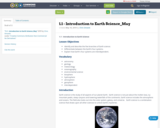
Draft of 1.1
- Subject:
- Applied Science
- Material Type:
- Activity/Lab
- Date Added:
- 05/31/2018

Draft of 1.1

Unit Objective(s): Expose students to a variety of careers.Answer the question, “How do people find their careers?”Students will have new ideas for career pathways. Note: Teachers and students will need to have a Nepris account.The full lesson plan is attached.

Do you like eggs? Learn how to identify and write the 4 Types of Sentences while exploring the topic of chickens & eggs from a local farm in Eastern Oregon. Visuals include a powerpoint presentation (excellent online resource to use with Google Classroom) Flowchart and Thinking Map. Two types of assessments are included ( one using a sentence frame ) and challenge those who need a little more by having them write a short story.Grades 6-8

This sample instructional plan incorporates WIDA Key Language Uses to support English Language development in tandem with content instruction. *Note: Some images may not appear in the "View Resource" format. To see all images in this instructional plan, click "download" at the bottom of the overview.
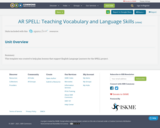
This template was created to help plan lessons that support English Language Learners for the SPELL project.
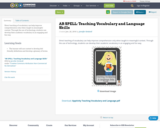
Direct teaching of vocabulary can help improve comprehension only when taught in meaningful context. Through the use of technology, students can develop their academic vocabulary in an engaging and fun way.
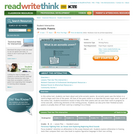
This online tool enables students to learn about and write acrostic poems. Elements of the writing process are also included.
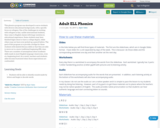
This phonics program was developed to serve students with diverse educational backgrounds, with a specific focus on refugees. One of the challenges in working with refugees is that, unlike international students, they come to English classes with huge variation in educational experience. Some students may have finished high school or have a college degree, while others may not have ever picked up a pencil before. The goal of this program is to provide a bridge for those students with limited literacy skills so that they are able to move on to a more traditional beginning ESL class. There are a number of assumptions about academic skills made in most English language classrooms, even at a beginning level. As a result, teachers and students alike become frustrated when those expectations are confounded.

Slideshow to practice English vocabulary related to the topic of Health Problems. Created especially for adult and adolescent English learners.
For more resources, see abceng.org/library.
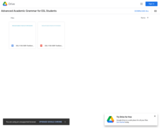
This textbook was created for an advanced academic grammar course for ESL students. By the end of the course, students will recognize and demonstrate the appropriate use of advanced grammar structures. To meet these outcomes, students will listen to aural language that includes the target structures, identify and edit grammar errors in written language, read and analyze texts that include the target grammar structures, and demonstrate the correct and appropriate use of target structures in written and spoken language.

This book has been created to provide a framework for building your skills in writing and critical thinking. It provides access to published samples from professional authors along with essay drafts from ESL students who have polished their skills in their respective writing courses.
The themes in the readings will give you a variety of topics to discuss with your classmates, which may inspire your own deeper thinking and writing. Overall, we hope that as you proceed through these chapters, you will build confidence and develop your voice in the classroom and beyond.
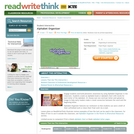
Students use this online tool to create an alphabet chart or pages for an alphabet book.
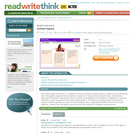
Supporting inquiry-based research projects, the Animal Inquiry interactive invites elementary students to explore animal facts and habitats using writing prompts to guide and record their findings.
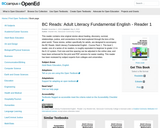
BC Reads: Adult Literacy Fundamental English Reader 1
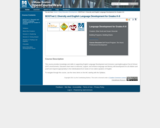
This course provides knowledge and skills in supporting English Language Development and Inclusive Learning throughout Out-of-School (OST) environments. Educators learn learn to welcome, support, and enhance language and literacy skill development for all children and youth and respond appropriately to the individualized ELD needs of non-native speakers of English
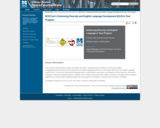
This course for Administrators provides knowledge and skills in supporting diverse families and enhancing English Language Development (ELD) across expressive and receptive language domains for school-age children who are English Language Learners (ELL) or have other learning and language barriers. Administrators learn about key standards and best practices and explore strategies to implement improved practice, creating a shift in policies and programmatic culture to embrace and support diverse learners, welcoming non-native English speaking families and enhancing the ELD progress of students who are learners of English.

The book is titled "Basic English for Teaching Korean," and its primary audience consists of Korean teachers whose native language is not English and who plan to work in an English-speaking country. Given the increasing global demand for learning the Korean language, many individuals aspire to become Korean instructors. Among these future Korean educators, there are those who lack confidence in their English speaking skills and seek guidance on effectively teaching the Korean language using clear and fluent English. They are also interested in acquiring the appropriate terminology and expressions for conveying aspects of the Korean language and culture when instructing in the classroom. Within this book, we will offer a comprehensive, step-by-step guide on how to teach the Korean language in English.
수업이 참 쉬워지는 한국어 교실 기초 영어"는 영어 실력이 부족하다고 느끼시거나 영어에 자신감이 없으 신 한국어 선생님들이 수업에 필요한 영어를 쉽게 익힐 수 있도록 구성한 책 입니다. 생소한 영어가 아닌, 우리가 알고 있는 영어를 최대한 활용 할 수 있도록 핵심적인 내용을 간결하게 담는 데 초점을 두었습니다. 책은 한 학기의 흐름에 맞추어 ‘수업 소개-수업 진행-수업 마무리’의 세 파트로 구분됩니다. 각 파트를 이루는 챕터들은 세부 상황으로 구 분하여 핵심 단어와 표현, 응용 문장과 대화를 수록했습니다. 설레는 학기의 시작부터 마음 따뜻해지는 학기 마무리까지 이 책 한 권으로 선생님들께 도움을 드릴 수 있다면 좋겠습니다.
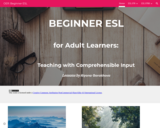
This site hosts two beginner adult ESL courses offered by Grossmont Community College: ESL 078 (with focus on listening fluency) and ESL 078R (with focus on reading proficiency). Each container offers materials for the first 2-4 (or more) weeks of the courses. The timing depends on the pace of a low-beginner class. Some classes may go faster and take 2 weeks, and some may need to go slower and may take up to 4 weeks.
The units that are offered are mostly for the instructor of the courses. This is because the teacher must lead the course with aural and verbal comprehension checks. At this level, students have very limited ability to communicate in any meaningful way, so the materials provide guidance to the teacher leading these courses.
The materials include videos, slideshows, vocabulary sheets, readings (such as original stories), teacher scripts, and simple assessments.
The materials are based on the principles that underlie contemporary language teaching in the area of Second Language Acquisition. The proficiency based approaches that have been used to create these materials are CI (comprehensible Input) and TPRS (Teaching Proficiency Through Reading and Story-Telling).
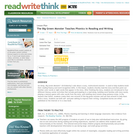
Go Away, Big Green Monster! Ed Emberley's tale about a scary, multicolored monster is used to help students build their reading fluency and word recognition skills. In this lesson, students chorally read the story and then point out familiar color words or sight words that appear in the story. After finishing the story, students are introduced to four different literacy center activities that include participating in a read along, building word families with story words, playing a memory game with color words from the story, and retelling story events using sentence strips. In the sessions that follow, students create their own artwork of the big green monster and use that artwork to help them write a story. Students use both self- and peer-editing to improve their writing. Completed stories are either published on the Internet or in a class book.
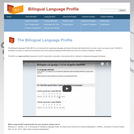
There is great need to understand individuals' functional language abilities, not only in education but in commerce and public policy discussion. The aim is to quantify language use patterns, proficiency, and dominance in the two languages of bilinguals. The Bilingual Language Profile (BLP) is an instrument for assessing language dominance through self-reports that is concise, quick, and easy to use. The BLP is intended to produce a continuous dominance score and a general bilingual profile taking into account a variety of linguistic variables. The BLP is an open and free assessment tool for researchers, educators, and anyone with an interest in assessing language dominance.